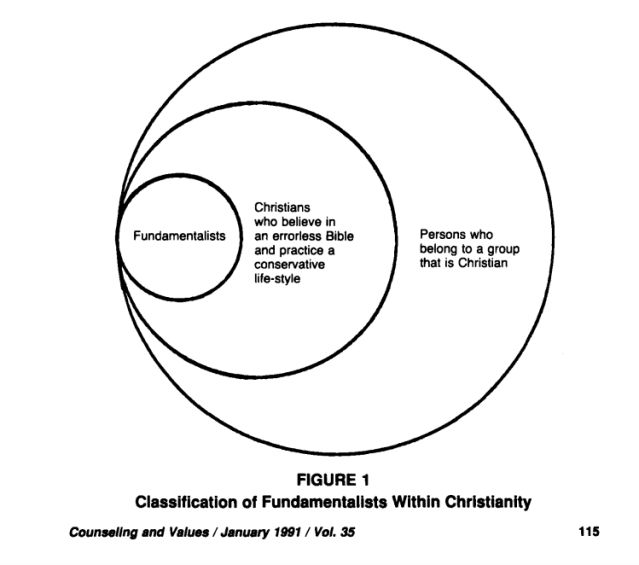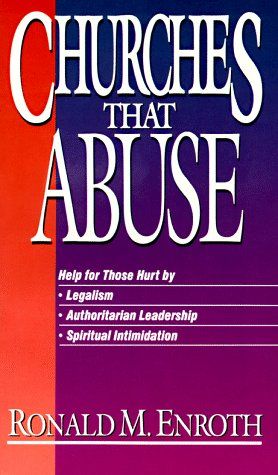Trauma
The Spiritual Abuse and Harm Screener and Its Revelations
Clinicians and survivors of spiritual abuse can use an assessment survey.
Updated April 24, 2024 Reviewed by Abigail Fagan
Key points
- "Religious trauma" refers to leaving an authoritarian religion and coping with the damage of indoctrination.
- Spiritual institutions, where accountability systems are rare, can attract people seeking power and control.
- Abusive spiritual leaders may employ the same narrative-controlling tactics as other abusive individuals.

What Is Spiritual Abuse?
In 1991, a church pastor and a mental health counselor—Jeff Van Vonderen and David Johnson—teamed up to publish The Subtle Power of Spiritual Abuse: Recognizing and Escaping Spiritual Manipulation and False Spiritual Authority Within the Church, the book wherein they coined and conceptualized ‘spiritual abuse.’
Spiritual abuse, as the authors define it, is “the mistreatment of a person who is in need of help, support, or greater spiritual empowerment, with the result of weakening, undermining, or decreasing that person’s spiritual empowerment.” They note that spiritual abuse usually occurs when leaders use their “spiritual position to control or dominate another person” and when “power is used to bolster the position or needs of a leader.”
In 1992, Ronald Enroth echoed the same concern about power and control among abusive leaders. In Churches That Abuse: Help for Those Hurt by Legalism, Authoritarian Leadership, Manipulation, Excessive Discipline, and Spiritual Intimidation, Enroth includes authority and power as one of the five domains of religious abuse. The others are manipulation and control, elitism and persecution, lifestyle and experience, dissent and discipline.

Religion and spirituality are actually distinct concepts. Yet not much difference exists in terms of how leaders of organized institutions and groups use both to gain power and control over others.
Thus, both spiritual abuse and religious abuse overlap significantly with adverse religious experiences, which the Global Center for Religious Research defines as, “an event, series of events, relationships, or circumstances within or connected to religious beliefs, practices, or structures that are experienced by an individual as overwhelming or disruptive. These experiences have the potential of resulting in religious trauma.”
In Leaving the Fold (2006), Dr. Marlene Winell—a religious abuse survivor and psychologist—coined and conceptualized Religious Trauma Syndrome (RTS). Winell’s theory of RTS builds upon previous work about the process of religious and/or spiritual abuse, and offers a framework for understanding the outcomes, specifically long-lasting and multifaceted impacts on one’s nervous system. RTS is not an official diagnosis in the DSM-5, but the concept is described as, “the condition experienced by people who are struggling with leaving an authoritarian, dogmatic religion and coping with the damage of indoctrination. It can be compared to a combination of PTSD and Complex PTSD (C-PTSD).”
Several years later, Dr. Winell published a trilogy of essays in Cognitive Behavioural Therapy Today, urging the counseling and psychology professions to respect RTS as a legitimate form of trauma and abuse that is religious and/or spiritual as a serious form of abuse. Arguably the most important takeaway from Dr. Winell’s essays is a point about the “two-fold” impact of religious trauma:
First, the actual teachings and practices of a restrictive religion can be toxic and create life-long mental damage. In many cases, the emotional and mental abuse is compounded by physical and sexual abuse due to the patriarchal, repressive nature of the environment.
Second, departing a religious fold adds enormous stress as an individual struggles with leaving what amounts to one world for another. This usually involves significant and sudden loss of social support while facing the task of reconstructing one’s life. People leaving are often ill-prepared to deal with this, both because they have been sheltered and taught to fear the secular world and because their personal skills for self-reliance and independent thinking are underdeveloped.

No particular belief system is most likely to enact religious or spiritual abuse, or cause RTS. These patterns of abuse do, however, correlate with numerous characteristics of both religious fundamentalism and spiritual cultism. Consequently, fundamentalist religious groups and spiritual cults can exist across a vast number of traditions, while still sharing the same exact institutional and interpersonal dynamics (e.g., extremism and narcissism).
The New Screener
The Spiritual Abuse and Harm Screener, released in 2022, is a free and publicly accessible survey. Results can help individuals identify several types of spiritual harm, as well as the severity of each category.
The assessment includes 27 questions that cover five different types of spiritual harm, in order: controlling leadership (#1-5), embracing violence (#6-9), maintaining the system (#10-14), gender discrimination (#15-16), internal distress (#17-24), and harmful God-image (#25-27).

A few examples of such statements include:
- My behavior being excessively monitored by my pastor or group members
- My pastor/leader explicitly claiming to speak on God’s behalf
- Being expected to follow my pastor/leader’s personal rules/advice around dating, marriage, and sex
- Seeing Scripture used to justify abusive parent-child behavior
- Seeing the leadership or group protecting or elevating abusive individuals
- I was pressured to stay in an abusive marriage by religious leaders
- I was taught that I would be risking Hell if I left my particular church
- I was made to feel like I was the crazy one for having doubts or questions
As a public scholar of religious literacy and religious psychology, I consider it a major step forward that almost one-third of The Spiritual Abuse and Harm Screener highlights institutional abuse under abusive leadership, not just bigotry propped up by toxic theology.
Why? As I like to say, “The Bible says you are going to hell,” is religious bigotry. Religious abuse, on the other hand, sounds more like, “Fine, then, speak up. But be careful…I’ll destroy you.” One is a legalistic position on doctrine—the other is a promise or threat to make one suffer for exposing abuse being swept under the rug. Survivors of spiritual abuse need clinical instruments that encompass both.

Over 30 years later, The Spiritual Abuse and Harm Screener captures the nuances of religious and spiritual abuse with just as much depth as Churches That Abuse, by Ronald Enroth. I completed the SAHS assessment myself, and could not help but think about Enroth's work.
A major takeaway of the book, for me at least, was that a large part of religious and spiritual abuse is re-victimization in the form of stripping away one's right to control their own narrative.
Sadly, research shows this silencing and voicelessness can traumatize survivors and whistleblowers of all types of abuse—from campus sexual assault and workplace harassment and discrimination, to narcissistic abuse by popular or publicly influential romantic partners and spiritual abuse by con artist religious leaders with calculated public facades.
Among these many different types of survivors, one could find the same exact story arcs featuring backlash from abusive individuals whom the masses put on pedestals; the persistence of victim-blaming smear campaigns, despite exhaustive counter-evidence; the crushing stigma of pathologizing labels used to assassinate your character and discredit your intellect; the depleting trust issues and self-seclusion that result from flying monkeys and gang stalking; the despair of coping with grief and abandonment in isolation; the betrayal of passive bystanders who prioritize fitting in more than standing up for you; the gullibility of yes-men who do not realize they are puppets.
And, for this reason, “Who cares what other people think anyway?” and “As long as you know the truth, that’s all that matters” are not enough when it comes to religious and/or spiritual abuse. These consolations may do the trick with small-scale conflicts, or even instances of religious bigotry. But the nature of religious and spiritual abuse is institutional and communal, not to mention ongoing and pervasive.
These tactics are undoubtedly abusive, and their impact is often traumatic. Abusive leaders are the glue that holds it all together.
References
Baker, A. (2022, June 12). How healthy spirituality and religious fundamentalism differ. Psychology Today. https://tinyurl.com/2hw56jc9
Enroth, R. (1992). Churches that abuse: Help for those hurt by legalism, authoritarian leadership, manipulation, excessive discipline, and spiritual Intimidation. Zondervan Publishing House.
Koch, D. & Edstrom, L. (2022). Development of the spiritual harm and abuse scale. Journal for the Scientific Study of Religion, 61(2), 476–506. https://doi.org/10.1111/jssr.12792
Johnson, D. & Van Vonderen, J. (1991). The subtle power of spiritual abuse: Recognizing and escaping spiritual manipulation and false spiritual authority within the church. Bethany House Publishers.
Slade, D. M. (2022, August, 8). Adverse religious experiences (ARE) VS. religious trauma (RT): An important distinction. Global Center for Religious Research. https://www.gcrr.org/post/adversereligiousexperiences
Winell, M. (2006). Leaving the fold: A guide for former fundamentalists and others leaving their religion. Apocryphile Press.
Winell, M. (2011 May). Part 1: Religious trauma syndrome–It’s time to recognize it. Cognitive Behavioural Therapy Today, 39(2). https://tinyurl.com/5x59yd8s
Winell, M. (2011 September). Part 2: Religious trauma syndrome–It’s time to recognize it. Cognitive Behavioural Therapy Today, 39(2). https://tinyurl.com/5x59yd8s
Winell, M. (2011 November). Part 3: Religious trauma syndrome–It’s time to recognize it. Cognitive Behavioural Therapy Today, 39(2). https://tinyurl.com/5x59yd8s




